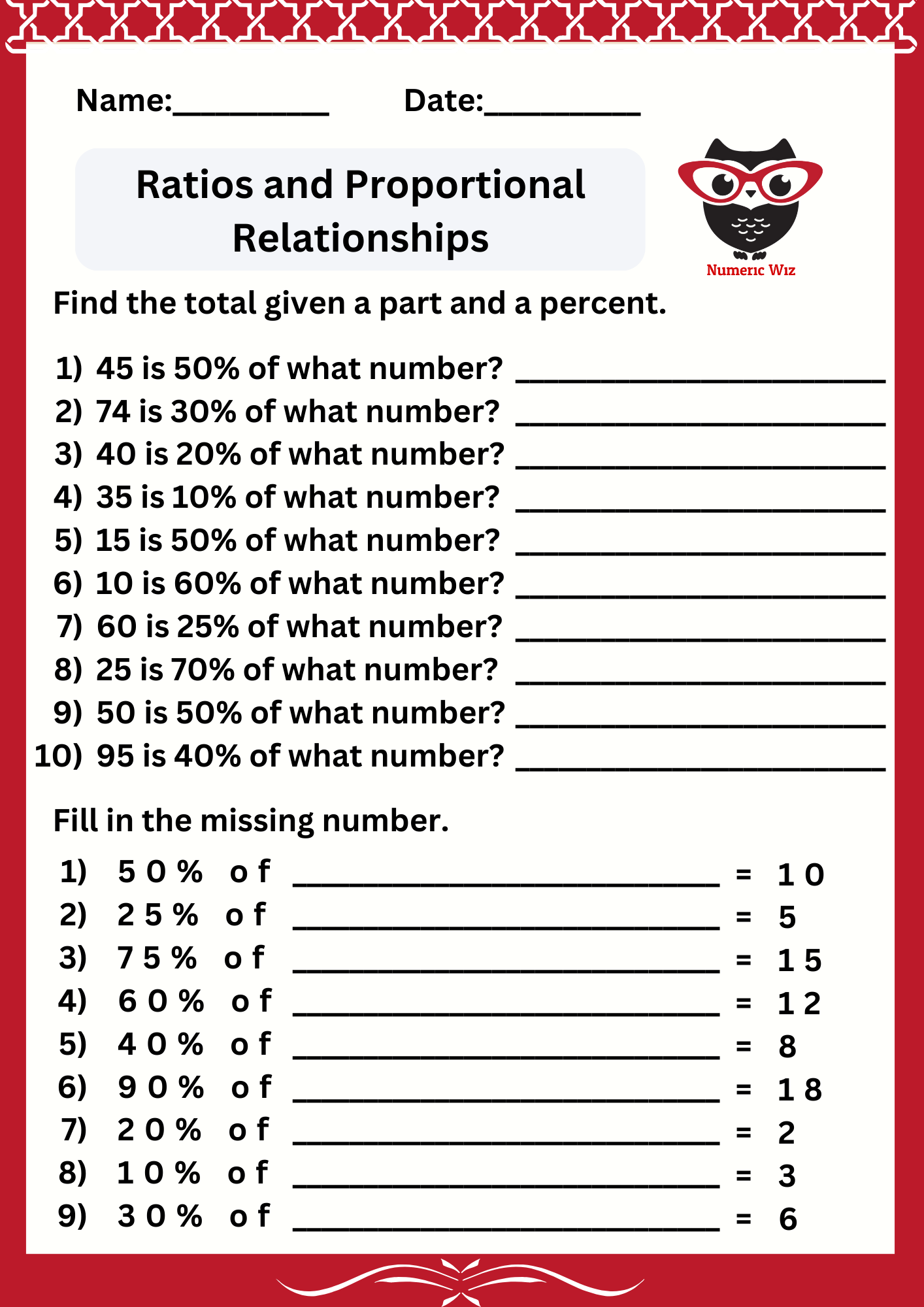
When working with percentages, one common problem is finding the total (or whole) when you are given a part of it and the percentage that part represents. This concept is widely used in real-life scenarios such as calculating total population based on a survey, determining original prices before discounts, and understanding financial growth.
To find the total, we use the formula:
To solve for the total, the formula can be rearranged as:
 Total = (Part × 100) / Percent
Total = (Part × 100) / PercentExample 1:
Given: 30% of a number is 12. Find the total.
Total = 12 × 100 /30 = 40
Total = 40
Answer: 40
Example 2: Given: 20% of a number is 18. Find the total.
Total = 18 × 100 / 20= 90
Answer: 90
Example 3:
Given: 15% of a number is 9,000. Find the total.
Total = 9000 × 100 / 15
= 60,000
Answer: 60,000
Mastering this method helps in solving percentage-related problems quickly and accurately.
Finding the total given a part and a percent is useful in various real-world situations, such as:
![]() Calculating original prices before discounts or tax.
Calculating original prices before discounts or tax.
![]() Estimating total populations based on sample data.
Estimating total populations based on sample data.
![]() Determining overall expenses when given a percentage breakdown.
Determining overall expenses when given a percentage breakdown.
By mastering this skill, you can confidently solve problems related to finance, shopping, business, and data analysis.
Let's explore similar worksheets focused on calculating percentages and finding totals.
For a limited time
